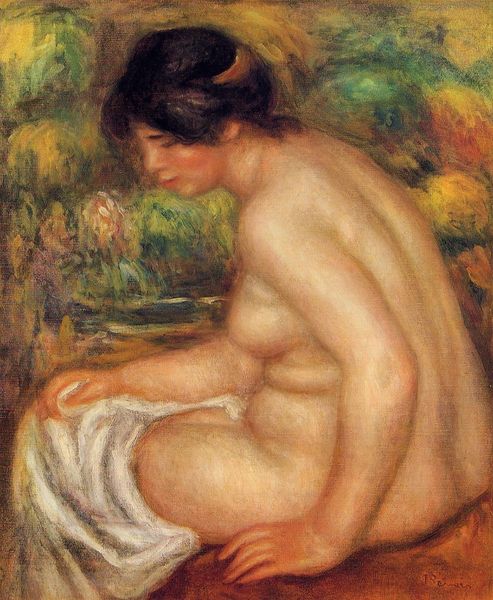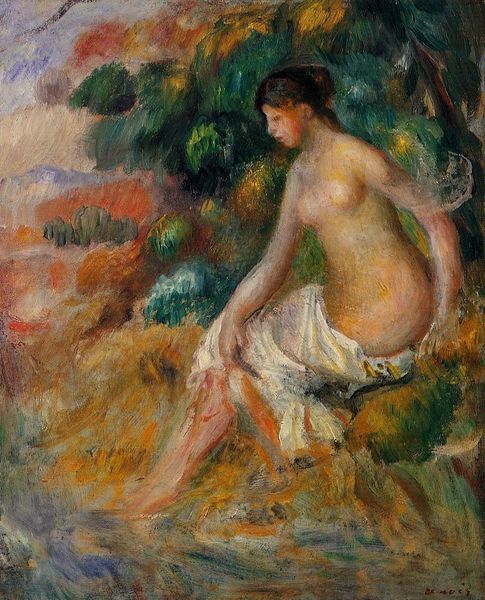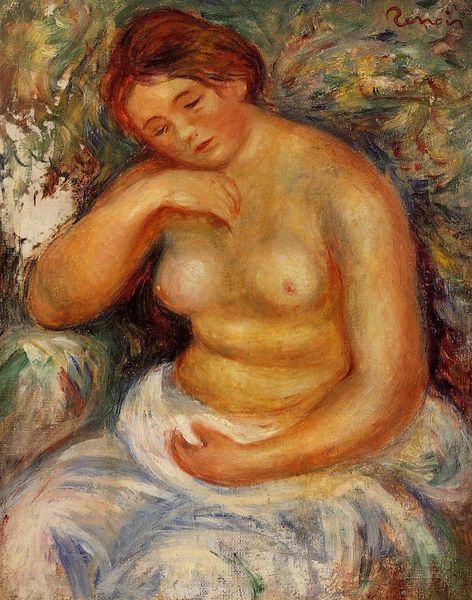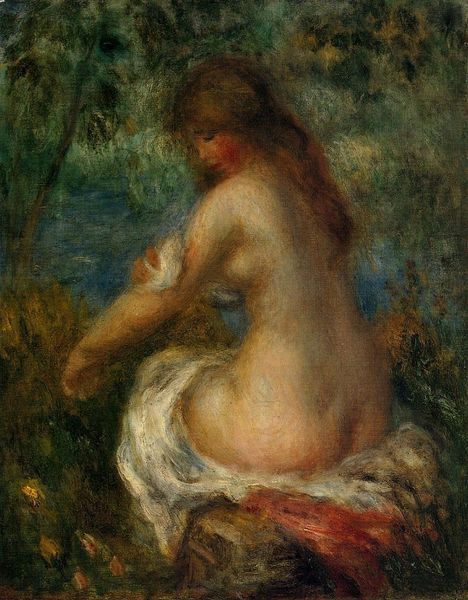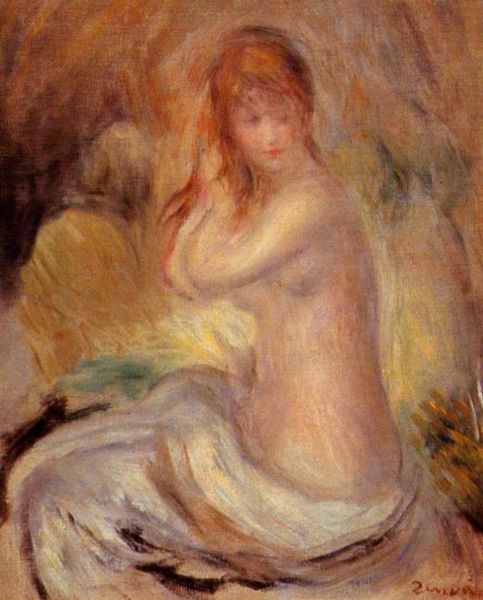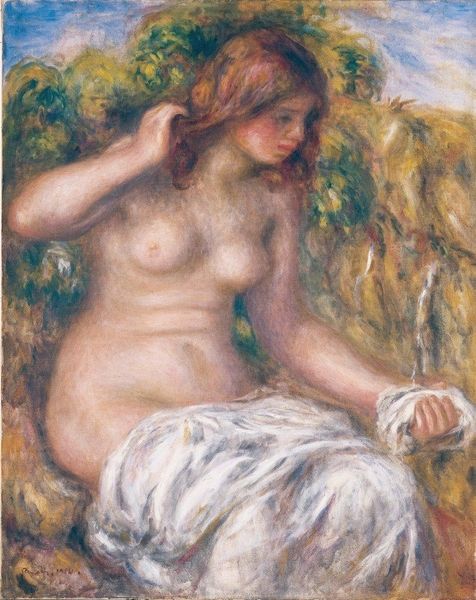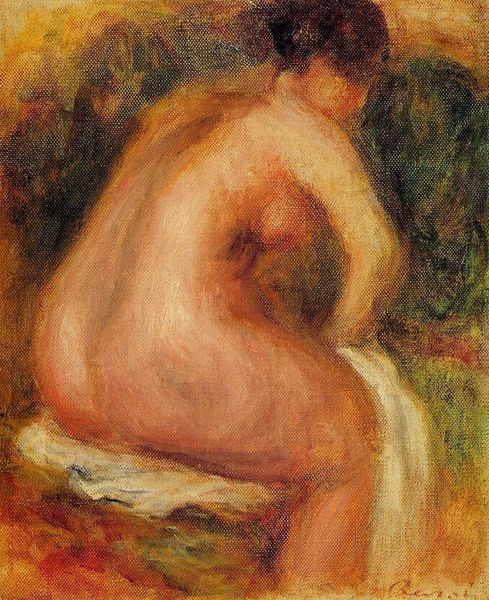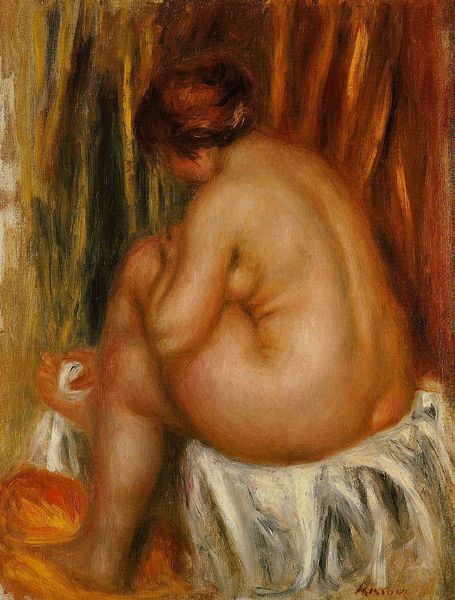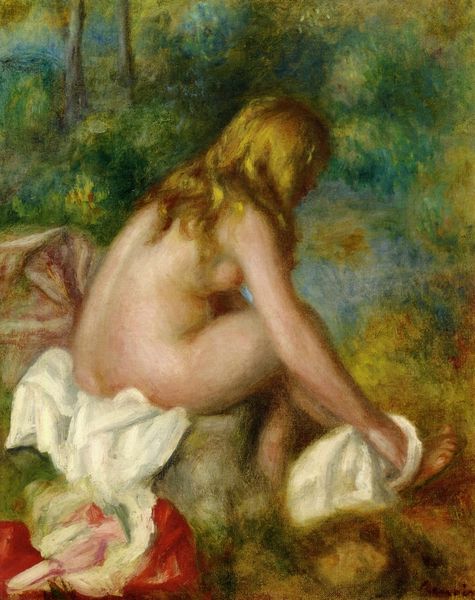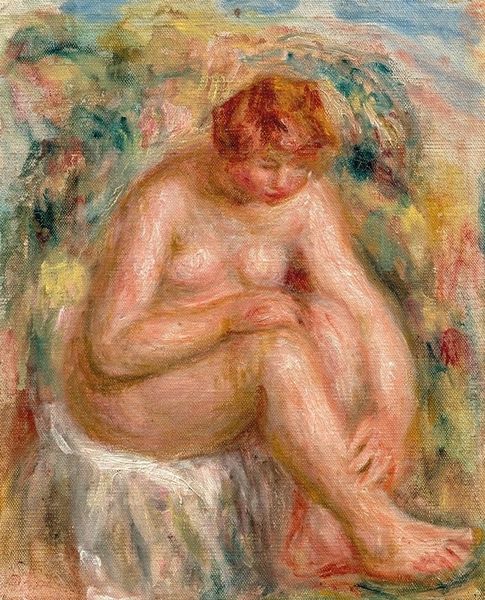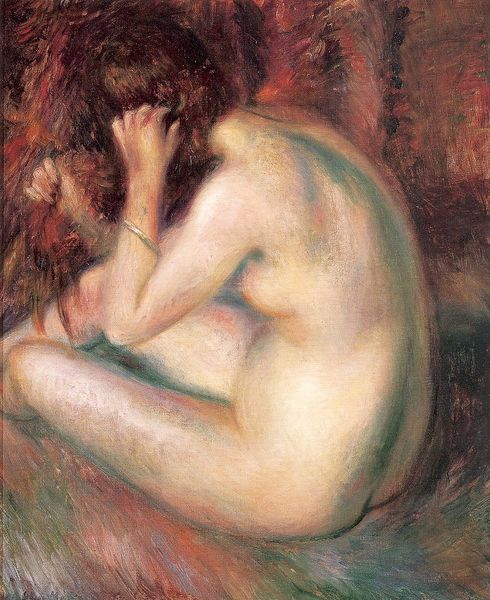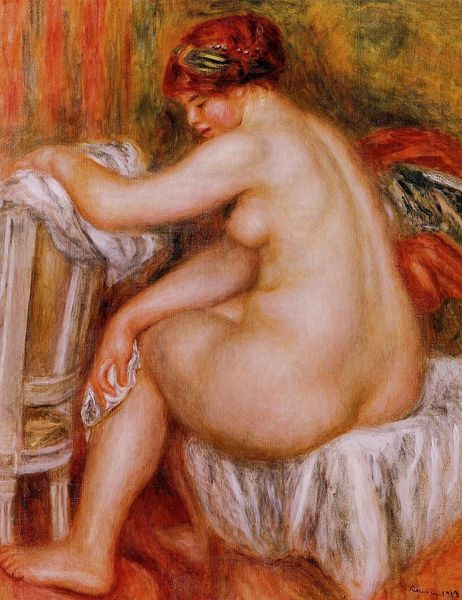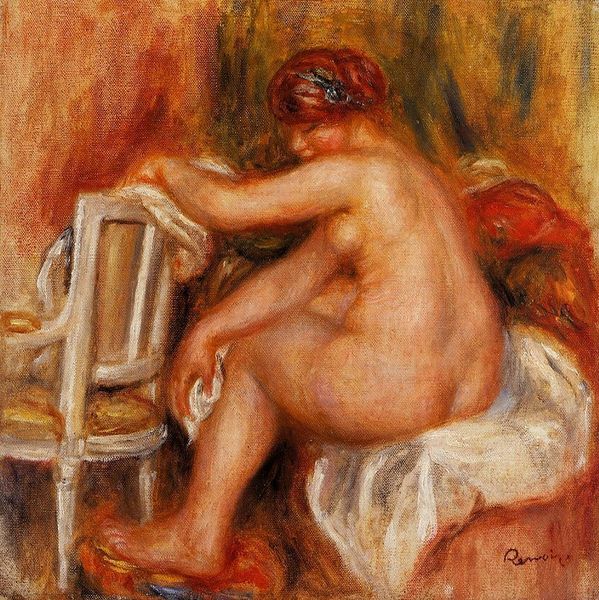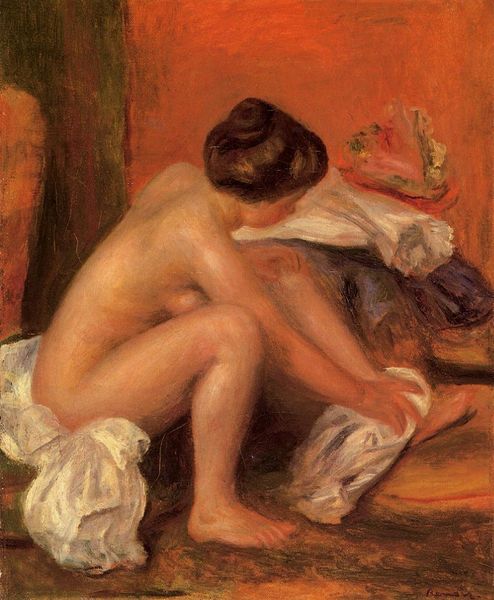
#
possibly oil pastel
#
oil painting
#
acrylic on canvas
#
portrait head and shoulder
#
underpainting
#
mythology
#
animal drawing portrait
#
portrait drawing
#
facial portrait
#
portrait art
#
digital portrait
Copyright: Public domain
Editor: This is "Bathing," painted by Pierre-Auguste Renoir around 1915. It seems to be an oil painting, and it's… remarkably tactile. All those visible brushstrokes create a really fleshy effect. What's your take? Curator: The tactile quality speaks volumes, doesn’t it? Notice how Renoir is practically sculpting with paint. We must consider his process here: building up layers of pigment to achieve this fleshy effect, transforming paint from a mere medium to something almost tangible. It's not just representation; it's the act of making flesh. Editor: So you're saying the materiality is actually part of the subject? It’s not just *of* flesh, but it becomes a sort of stand-in *for* flesh, in a way? Curator: Exactly! Think about the labour involved. The repeated application, the blending... it's a deliberate and time-consuming process. Also consider what materials Renoir had available to him. His class, the setting he chose to paint in. It speaks to what art materials and tools were becoming readily accessible to middle-class artists. Do you agree? Editor: Absolutely. Thinking about it like that, the work suddenly has a much stronger sense of, I don't know, lived experience to it. It isn't just about aesthetic pleasure, but a document of its making, its historical production! I'd never thought about Impressionism in that light before. Curator: Indeed. By focusing on the "how," we begin to understand the "why." The act of painting is inseparable from its subject and context. And it highlights our reliance as viewers on both the labour and the access Renoir had at his disposal in making this piece.
Comments
No comments
Be the first to comment and join the conversation on the ultimate creative platform.
